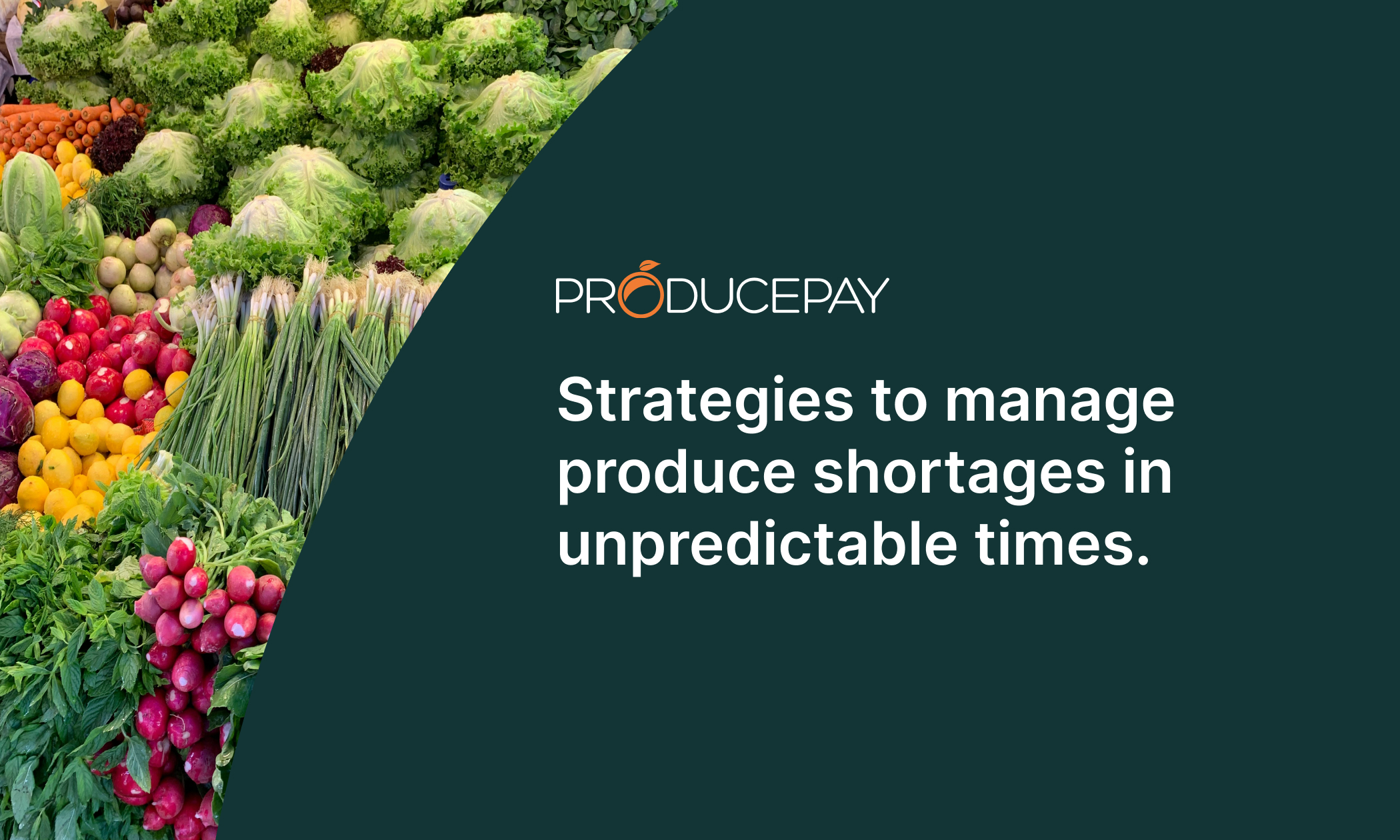
Strategies to manage produce shortages in unpredictable times.
The global agricultural industry feeds billions and underpins economies worldwide. However, it faces recurrent produce shortages, intensified by unpredictable events.
Volatility in the sector, driven by unpredictable weather patterns, fluctuating market supply and demand, and geopolitical tensions, further exacerbates the challenge. These factors endanger countless people’s livelihoods and severely threaten global food security.
With a staggering 258 million people worldwide facing acute food insecurity, the need for stable and efficient food supply chains is undeniable, and agribusinesses are uniquely positioned to address these challenges head-on.
Leveraging innovative strategies and technologies can enhance supply chain resilience, ensuring that produce suppliers can meet the demands of a growing global population despite the industry’s inherent uncertainties.
Understanding produce shortages
Extreme weather events can disrupt production and cause food shortages. These events reduce crop yields and increase food and economic losses, resulting in insufficient food supply to meet the population demand.
According to FAO, the agricultural sector experiences an estimated $123 billion in yearly losses due to disaster events, representing 5% of the annual global agrarian GDP.
Droughts decrease water availability and quality, while hurricanes and flooding can destroy entire cultivation areas, affecting infrastructure and livelihoods. Climate change has also increased the frequency, intensity and unpredictability of these events.
Additionally, a lack of sustainable growing practices and the overexploitation of resources contribute significantly to water and land pollution, resulting in diminished production.
Moreover, the journey from field to table is long and fraught with hurdles. The lack of supply chain transparency, pests and diseases, failure to meet demand quality specifications, transportation disruptions, and geopolitical conflicts can all contribute to shortages. These issues not only delay delivery but can also lead to significant losses.
When shortages occur, prices usually rise, making essential commodities less affordable and exacerbating food insecurity, particularly among the most vulnerable population. In the United States, 12.8% of households are food insecure, struggling to provide adequate food for all members due to limited resources.
Additionally, shortages can lead to increased food waste as perishable food spoils before reaching consumers. 38% of global food production remains unsold or uneaten annually, equivalent to a staggering 149 billion meals.
How to manage produce shortages
Effectively addressing produce shortages requires a comprehensive approach prioritizing resilience, supply chain efficiency, and sustainability. Here are the best strategies to succeed:
Create climate resilience
Creating risk management plans is critical to predicting and managing the effects of climate events in the supply chain. These plans may include cultivating more resilient crop varieties and employing predictive analytics to foresee and mitigate potential climate-related disruptions.
Adopt and promote sustainable practices
Sustainable agricultural practices are essential. These include improving irrigation and water management systems, reducing chemical input dependency, avoiding water & land pollution, and enhancing biodiversity.
Aligning sourcing strategies with sustainability principles is critical to help build more resilient supply chains and ensure that current agricultural practices do not contribute to future shortages.
Expand visibility in the supply chain
Greater transparency across the supply chain enables quicker identification and resolution of disruptions, reducing the likelihood of shortages. This can be achieved through advanced tracking systems and collaborative platforms that share real-time data with all stakeholders.
Optimize logistics and inventory management
Embracing technology can significantly improve the efficiency of transportation and inventory management. Advanced logistics solutions that optimize routes, reduce transit times, and minimize losses ensure that produce reaches markets in optimal condition.
Strengthen supply and demand relationships
Fostering strong relationships between suppliers and retailers can improve the predictability of demand and supply. This requires closer communication, long-term contracts, and collaborative planning to ensure production levels meet consumer demands and avoid surpluses or shortages.
Improve financial position
Financial instability is one of the primary reasons growers and businesses are vulnerable to produce shortages. A solid financial position enables them to react faster to supply disruptions and invest in improvements and innovations.
This includes investing in more efficient production methods, post-harvest treatment, logistics or distribution technologies and creating buffer stocks to protect against future shortages.
How ProducePay minimizes shortages by creating resilient supply chains
Our goal is to transform the agricultural industry with transparent, predictable commerce that eliminates food waste. Our Predictable Commerce Platform gives growers and buyers greater control of their business by providing unprecedented access to each other, capital, trading, insights and greater supply chain visibility. This transformational approach unlocks economic value and creates a more sustainable global produce industry with a significantly reduced likelihood of produce shortages.
We partner with the world’s leading integrated suppliers and retailers to build predictive commerce programs centered on the most volatile commodities that often experience shortages. Our programs integrate the entire supply chain through a powerful combination of our tailor-made solutions and global network of sustainable growers to create a stable 52-week supply that drastically reduces food waste and minimizes disruptions like produce shortages.
Other sources: Earth.org, Met Office

